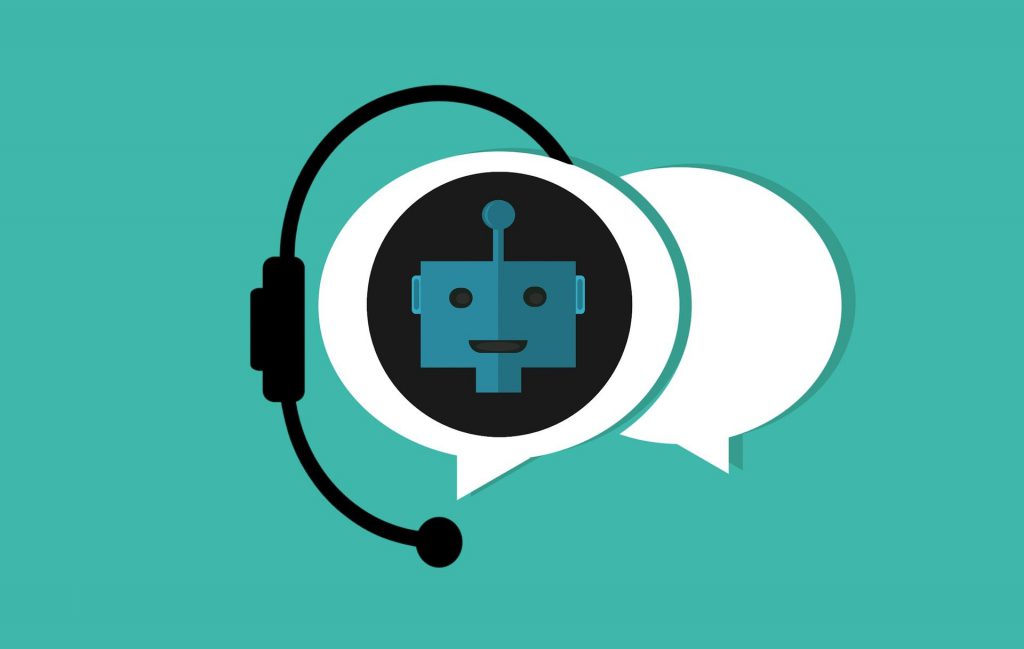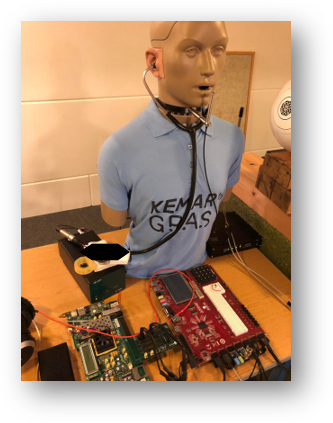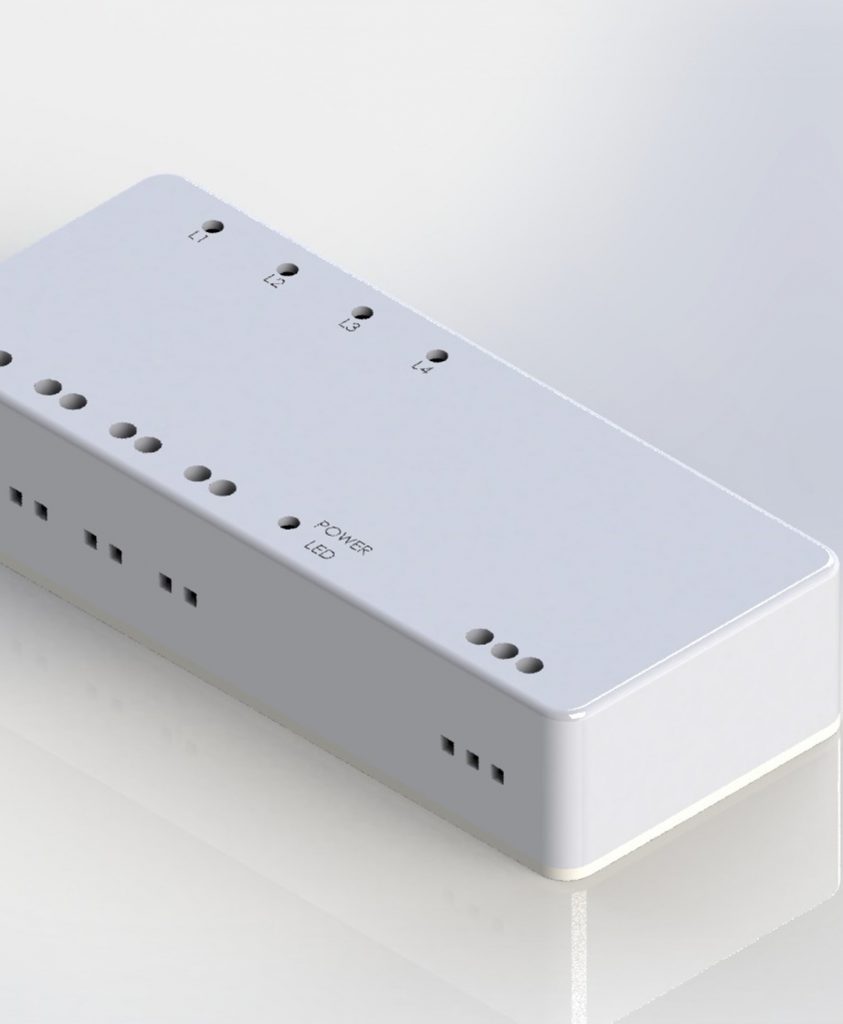Several IISc start-ups are exploiting technologies that involve machine learning and related areas for socially-relevant applications such as OCR, healthcare, energy management and compiler development

At the office of the Worth Trust, an NGO in Chennai, a visually challenged person walks in with a Tamil book that they want to read. Although they have access to the physical copy of the book, the content remains inaccessible to them. The people at the Worth Trust office ask the person to come back the next day, by which time they are able to convert the book into a braille version. Their efforts are making such books accessible to thousands of visually-impaired people across the city, dramatically increasing accessibility to printed content in local languages. This has been made possible by the OCR (Optical Character Recognition) technology developed at RaGaVeRa Indic Technologies, a start-up which is incubated at the Society for Innovation and Development (SID), Indian Institute of Science (IISc).
One of RaGaVeRa’s goals is ‘the gift of new abilities’, according to its founders. This is inspired by their motivation to break language barriers through innovations and technology. Driven by this mission, they have developed OCR for Tamil and Kannada. Through OCR, images of printed text can be converted into electronic or machine encoded text which can then be made available for post-processing. Through the OCR technology that RaGaVeRa has developed, any printed text can be converted to e-text, which can be adapted to braille codes or put through a speech software for converting to audio. The start-up was set up by Shiva Kumar and AG Ramakrishnan (informally known as Prof AGR) from the Department of Electrical Engineering at IISc.
Through the OCR technology that RaGaVeRa has developed, any printed text can be converted to e-text, which can be adapted to braille codes or put through a speech software for converting to audio
After listening to a talk about speech recognition in the early days of research in the field, AGR became interested in this, even though his background was in biomedical engineering. He saw that the common choice for this work was the English language, which was a puzzle to him. Given the diversity of local languages in India, to him, a more obvious choice was to work on developing the technology for Indian languages. This sowed the seed for work on local language speech recognition in the early 2000s. Shiva Kumar then joined AGR, bringing with him 15 years of experience in the industry working on core technologies such as compiler development. At AGR’s lab in IISc, he started working on developing Kannada and Tamil OCR for his PhD. The success of the first few ventures of the lab, and encountering clients with several requirements in this domain, motivated them to start RaGaVeRa.
“There is so much educational material in one language; if it can become readily available in another language, [there’s] nothing like that. That is what we took on…and our focus is Indian languages,” says AGR.
Their work expanded eventually to speech recognition. This has applications in automating the responses at call centres of any major enterprise. Several calls received at call centres can be managed through automated response systems. The first step in this is speech recognition followed by Natural Language Processing, where the system understands the customer’s query and, based on the data that it gathers, synthesises a response to the question. RaGaVeRa has developed generalised speech recognition systems, but their goal is to also customise this to boost the accuracy of the system based on customer-centric data.
Similar to RaGaVeRa, other start-ups at IISc are also trying to exploit such machine learning approaches to solve problems in diverse fields, from healthcare to energy management.
AI stethoscope
Another area where machine learning finds application is healthcare. Heart and lung disorders cause the most deaths per year across the world and in India. But there are only about 4,500 cardiologists all over the country, which is an order of magnitude smaller than the current requirement projected to be more than 88,000 heart specialists. AI Health Highway is another start-up supported by SID at IISc, and their goal is to try and address this important gap and provide a helping hand to the healthcare system.
A stethoscope is the most widely used diagnostic tool in healthcare. Although several other devices used in diagnostics have undergone changes and improvements over time, the stethoscope has remained largely unchanged. It is the most basic tool used by various healthcare personnel, from nurses to super speciality doctors. The stethoscope provides vital information about a person’s health to the doctor. However, there’s a steep learning curve involved in learning to interpret the sounds detected by a stethoscope.
The journey of AI Health Highway began in January 2018 with the goal of improving the out-of-hospital segment of healthcare. Both co-founders of the company are doctors with several years of experience: Dr Satish Jeevannavar and Dr Radhakrishna Jamadagni. Dr Jeevannavar was with the Indian Army in his early days as a practicing doctor. After his time in the Army, he was part of the core founding team of a chain of General Physician clinics, followed by a start-up in telemedicine and mHealth (mobile health). He brought his extensive experience to set up AI Health Highway in 2018, along with Dr Jamadagni, a physician with a background in clinical research and public health, based in Maine in the USA. Soon after starting their journey, they got selected by an accelerator called Top Gun based at the University of Maine. They have been a virtual team since day one.
The product that they offer is an AI stethoscope or AI steth, which can predict cardio-respiratory disorders by screening sounds captured by a regular stethoscope. The AI steth has three aspects – device, data and intelligence. Normally, a doctor will ask for the patient’s history and conduct a physical examination using a stethoscope, following which they may advise investigations through tests to arrive at a final diagnosis. For a newly trained doctor, becoming proficient at differentiating a normal sound from an abnormal one takes time. Previous research shows that this can take anywhere from two to seven years. AI Health Highway aims to cut down this time by assisting with the diagnosis. The AI steth converts the acoustics captured by the device into visual wave patterns, which are streamed via Bluetooth onto a companion app on a smartphone. This data is then passed through an AI ML layer. In the machine learning component, these sounds are screened based on large amounts of trained data that distinguishes normal from abnormal sounds.
The AI steth converts the acoustics captured by the device into visual wave patterns, which are streamed via Bluetooth onto a companion app on a smartphone
After some market research in Singapore and the Asia Pacific region, AI Health Highway got selected to become a part of the start-up incubator Sound Hub in Denmark, which is a centre for research related to acoustics. This helped them develop the product and produce the hardware. The early prototype was developed in India but was later moved to Sound Hub in Denmark for research and development, and aesthetic enhancements. With support from SID, IISc, where they are currently incubated, they are able to get advice and mentorship from the academic sector and have also been able to start a pilot study with medical colleges.

(Courtesy: Sound Hub)
Automated power switches
Automation is also powering energy consumption management, through devices such as “smart” power switches.
At Urjalinks, another start-up incubated at IISc, the goal is to provide Control as a Service (CaaS) for smart energy management through sensing and analytics. It started out as a project on energy-aware smart campuses by Gurunath Gurrala, an Assistant Professor in the Department of Electrical Engineering at IISc. The team now includes Ashish Joglekar, B Vasu Dev, Abhijit Lele, BC Darshan and Ch. Sujith. The product they offer is automatic switches. During their initial research, they found that there were no switches that allowed remote and manual operation simultaneously. The smart switch developed by Urjalinks is a remote controlled device which uses AI techniques to understand user behaviour in order to derive control patterns and as a result automate energy management.

The use of electronic devices has increased tremendously over the last two decades, but the suppliers have little knowledge of the power quality at the user end
The use of electronic devices has increased tremendously over the last two decades, but the suppliers have little knowledge of the power quality at the user end. By detecting and analysing intermittent events like power surges that can damage the devices, the automatic switches also aim to protect the device. They also detect any electrical arcs in wiring which can prevent fire hazards. Once installed, the smart switches can “talk” to an app on people’s mobile phones and can offer remote control to the users. In addition, the AI algorithms can monitor appliance health, creating data for insurance tech and warranty applications. A semantic-based multi-agent framework provides personalised recommendations and scheduling algorithms. Provisions are also made for incentives in the form of energy consumption and carbon credits.
The analytics of this switch has multiple components to it. It involves identifying the device that is plugged in, and performance of the device over its lifetime. A larger agenda is also to identify power quality issues with the devices being plugged in. “One of the major goals at Urjalinks is to have a power quality network with precise information about power quality using data from the power grid,” says Gurrala.
Compiler infrastructure
While users get to enjoy the applications of AI and related technologies on their electronic devices, at the back end of this technology is a lot of software infrastructure that needs to be built by developers.
The start-up PolyMage Labs offers these services to businesses building this technology. They build compiler infrastructure for several platforms that run AI and ML workloads. The primary job of a compiler is to translate the programming language to instructions that the hardware can understand. As the hardware in devices that we use gets more and more specialised to run compuations faster, the programming languages and models are also evolving to improve productivity. General-purpose programming languages such as C, C++ and Java fall short of the demands of the new machine learning models. Therefore, there is a need to build infrastructure that is modular, reusable, and suited to the common abstractions found in AI/ML computations. As an example, deep learning, a popular field in ML/AI, extensively runs regular computations on multi-dimensional arrays.
PolyMage Labs is, therefore, creating the building blocks of the compiler infrastructure that can handle specialised hardware. These modules can then be used by any vendor building new ML/AI hardware or anyone optimising a model for high-performance hardware. They are essentially the ‘behind-the-scenes’ service providers who do not develop ML-AI applications themselves, but are rather building the ML-AI systems that translate the model to hardware. Therefore, there is a need to build infrastructure that is modular, reusable, and suited to the common abstractions found in AI/ML computations. As an example, deep learning, a popular field in ML/AI, extensively runs regular computations on multi-dimensional arrays.
Uday Kumar Reddy, now an Associate Professor at IISc, was working on compilers for high performance computing when he joined IISc in 2011 as an Assistant Professor. In 2011-2012, deep learning, which is a subfield of ML-AI, started becoming popular; one of the key reasons for its success was its ability to exploit state-of-the-art technology in high performance computing ‒ the hardware, the data sets, and the software ‒ to achieve results. This involves training the machine based on existing data in reasonable amounts of time and therefore requires high performance. It is this intersection between high performance and ML-AI where Reddy identified an opportunity in this domain. He spent a sabbatical at Google where he worked on some of the key projects like Multi-Level Intermediate Representation (MLIR) in this area which eventually became open source. This is a project that he co-founded and has actively contributed to. The infrastructure now built by PolyMage Labs is based on MLIR. At that time, Reddy was the sole founder; the company now has a small team of engineers and interns working with him.
“We often know how to build the hardware, but the software ‒ the compilers ‒ is a significant challenge. Our goal for our growth is being able to engage with multiple hardware vendors and build things that are reusable across all of them,” says Reddy, as he describes their work.
“We often know how to build the hardware, but the software ‒ the compilers ‒ is a significant challenge”
From the journeys of all these start-ups, a few things are apparent: One is that identifying good problem statements for the use of any technology is important.
Secondly, every new technology does not need AI. Artificial intelligence is becoming an overused catch-phrase. The role of the technology is to make a job simple and affordable without compromising on the reliability. The OCR developed by RaGaVeRa, for example, does not use deep learning. This makes it computationally less intensive and accessible on Raspberry Pi ‒ small, low-cost, single-board computers ‒ which makes them easily accessible for even young students.
And thirdly, it’s important to not lose sight of the role that a person can play in the system, according to Dr Satish Jeevannavar. “As a doctor, you’re always concerned about the patient that you are treating. I think some part is empathy: care for the patient. And technology cannot replace some of these aspects.”
Priti Bangal is a former PhD student from the Centre for Ecological Sciences, IISc
To read more articles in this series about start-ups incubated at IISc, click on the links below:
How MedTech Start-ups Incubated at IISc Aim to Simplify Lives




